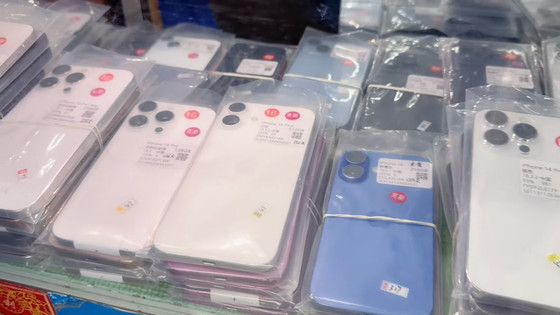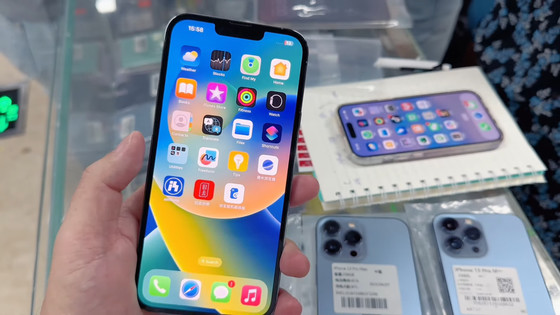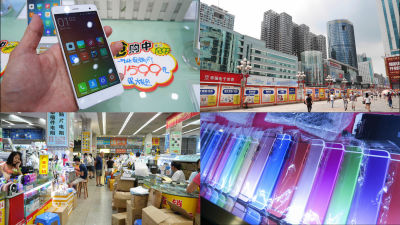How do black market dealers sell stolen iPhones in China?

As technology advances, the performance of smartphones has improved dramatically, but the price of smartphones has also risen accordingly, with high-end smartphones now costing hundreds of thousands of yen. As a result, there is no end to criminals stealing smartphones and reselling them, and smartphone manufacturers are also working on measures to prevent theft, such as locating them using location information and remotely locking them to make them unusable. The overseas media Financial Times explains the route that stolen iPhones actually take to be resold.
Inside China's 'stolen iPhone building'
How Stolen iPhones Travel From Western Streets to Chinese Markets - MacRumors
https://www.macrumors.com/2025/05/21/stolen-iphones-western-streets-chinese-markets/
At first glance, the Feiyang Times Building in Huaqiangbei, the electronics district of Shenzhen, Guangdong Province, China, appears to be just a corner of an ordinary electronics market, but on its fourth floor, a large number of second-hand iPhones are for sale. These include devices that consumers have officially traded in, but it is believed that some of the smartphones sold there are stolen, and the building has often been the subject of discussion on online message boards as the 'stolen iPhone building.'

An entrepreneur whose iPhone 15 Pro was stolen in London was able to track it and determine that it had traveled through Kowloon, Hong Kong, and then to the Huaqiangbei area of Shenzhen, suggesting that smartphones stolen in the West are being transported across Asia and eventually into the Chinese electronics market.
The route starts in Western cities, where criminals find targets on the street and snatch their smartphones. The stolen smartphones are then sent to local black markets and repair shops, and finally to Hong Kong. Hong Kong is a free trade city with no import or export taxes and easy customs procedures, making it a very convenient stopover point. A 31-storey building in the Kwun Tong district of Hong Kong is home to many businesses, who trade iPhones marked as 'iCloud locked' or 'ID enabled' via WhatsApp, WeChat, etc.
Retailers then participate in bidding and either carry the devices they win to Shenzhen as carry-on luggage or use specialist companies or smugglers to transport them. On the upper floors of the Feiyang Times Building, the devices are displayed in various states and buyers purchase them in bulk. SIM-locked American models are popular with dealers in Pakistan, Libya, and other countries because of the low import tariffs. Even if the communication functions are not available, the devices are apparently used for things like cameras, Wi-Fi, and games.

If the device is passcode-locked or remotely locked via iCloud, it becomes difficult to resell it, so it is disassembled and sold as parts. On the second floor of the Feyan Building, there are a number of parts specialists who buy screens, circuit boards, chips, and so on. Since there is demand for each individual part, it seems that even if the entire smartphone is unusable, it is possible to make a certain profit by disassembling and selling the parts.
Some victims of theft have reported that if they leave their devices locked, they are threatened or asked to remove the iCloud lock. Criminals do not necessarily have the means to forcibly unlock devices, but they have established a route to make a profit by selling devices or turning them into parts. There is definitely an international supply route in which smartphones stolen from the streets of Europe and the United States are sold in markets in Shenzhen via Hong Kong and then redistributed around the world, and the Feiyang Times Building can be said to function as one of the end points of that route.

'We will take appropriate measures in accordance with the law, if necessary, based on the actual circumstances,' Hong Kong police told the Financial Times.
Related Posts:







